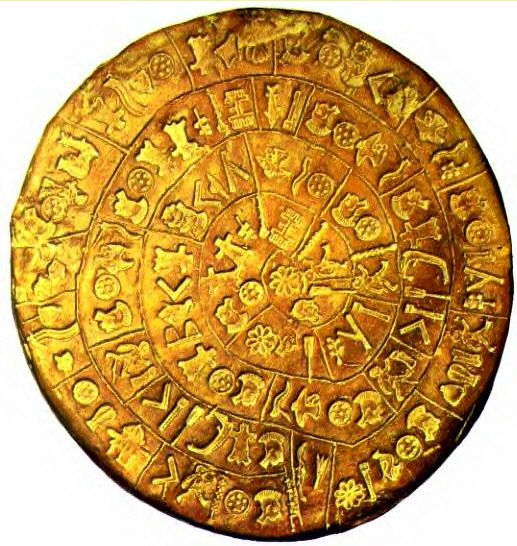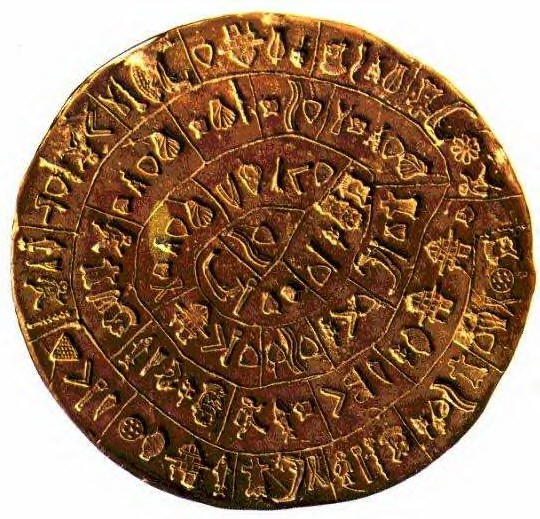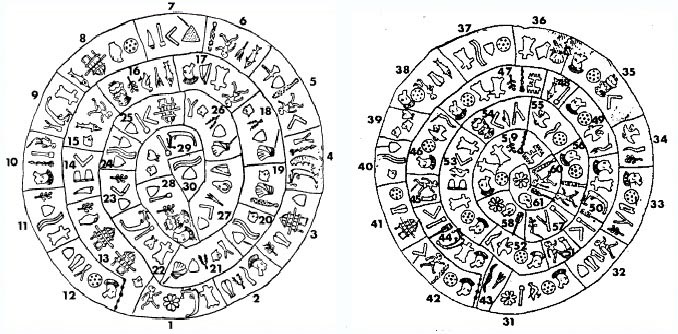| .
. |
The Phaistos Disc . . |
Side A . .
Side B .
. THE DISC DETAILS . |
| The Phaistos Disc is a small, baked clay
disc about five inches in diameter. On the surface of each side of the disc
are incised spirals and within these are groups of hieroglyphic type characters.
The Phaistos Disc is thought to date to about 1700BC. It is presently in
the Heraklion Museum in Crete.
. |
| People have tried for decades to unravel
the mystery of the Phaistos Disc. There are a few examples of this sort of
hieroglyphic script on Crete. Unfortunately there is no knowledge of the
language spoken on Crete in Minoan times.
. |
| Each side of the Phaistos Disc contains
an incised spiral. Within the whorls of these spirals are groups of hieroglyphs,
pressed into the clay with pre-made tools. The groups are separated by incised
lines crossing the spiral and there are between 2 and 8 glyphs per group.
Side A of the Disc contains 123 glyphs within 31 groups. Side B has 119 glyphs
within 30 groups. Some of the glyphs are repeated, on each side of the
Disc. . There is a mathematical principle that lies behind the number patterns of the Calendar Disc. The Phaistos Disc Analyzed A Physical Description of the Phaistos Disc . . |


